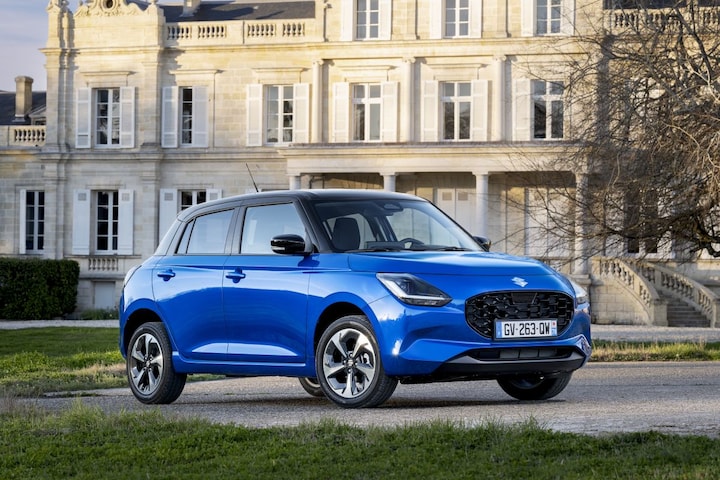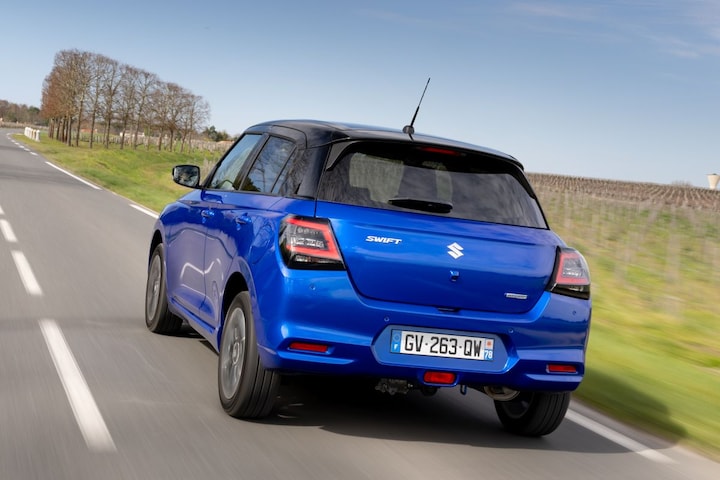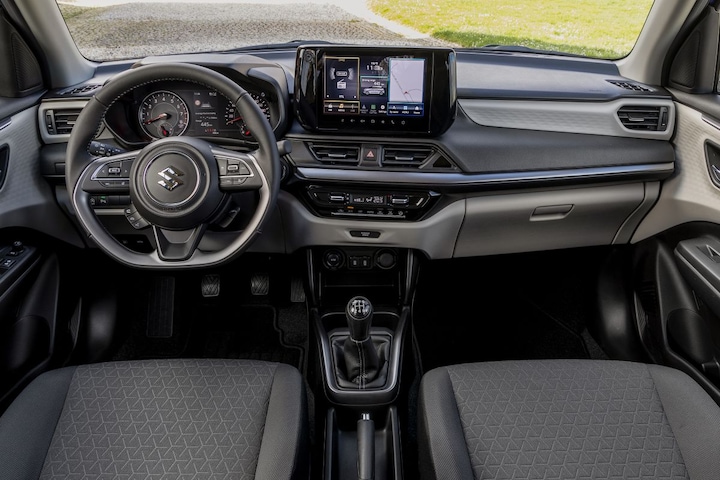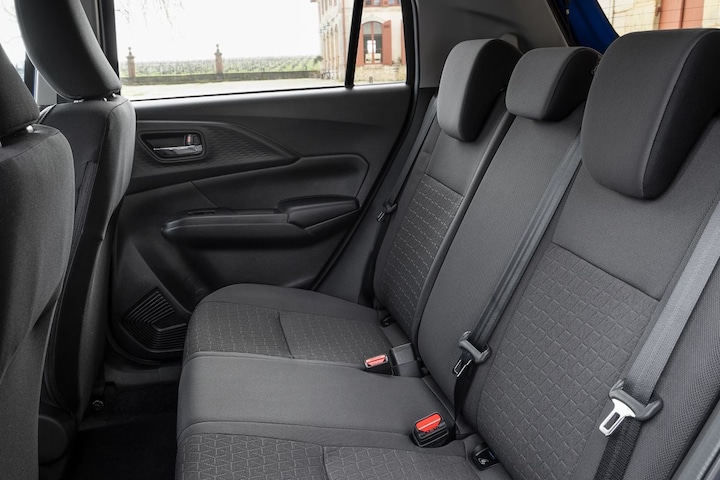‘Swift is now always a mild hybrid, with remarkably little power.’ Our team tests the Suzuki Swift. An extremely light car, and also the most economical petrol car.
In times when everything gets heavy and plugs are the norm, the fourth generation Suzuki Swift is completely out of place. It is compact, light and anything but overly powerful. We drove it and got a taste of old-school driving. With a touch of electric power.
Wait a minute, the fourth generation Suzuki Swift? I just count seven or eight?
Yes, good point. Surprisingly enough, Suzuki itself only starts counting with the model from the end of 2004, the nice little one that was praised by Cristiano Ronaldo. That car was called Swift all over the world, which did not apply to the many models that were already available under that name in the Netherlands, among others, in the last century. Confusing indeed, but for convenience we will just go along with the global count.

The design is not unanimously praised
It still looks a bit like the ‘first’ Suzuki Swift…
The design is indeed a continuing evolution of the 2004 version. Not to everyone’s satisfaction, however. Make good taste remains personal, so to speak, so let’s move on to technology. The car has been given a brand new 1.2. This has exactly the same cc capacity (1,197) as the 1.2 in the previous Swift, but one cylinder less. No turbo, but a few horsepower of electric support from an electric motor, creating a mild-hybrid system. In total we have 84 hp. This is actually less than the entry-level car from 2004, whose naturally aspirated 1.3 produced 92 hp. On the other hand, it is, at least on paper, extremely economical. With a score of less than 100 grams of CO2/km, it is the most economical petrol car with a manual gearbox currently available.
But can you make any progress with 84 hp?
It’s alright. The 0-100 time of 12.5 seconds is no longer up to date, especially for a car with some dynamic ambitions. It helps that the electric support gives you some extra torque at low revs, but you still have to push hard to gain some speed. It is not a real speed block either, with a redline at 6,000 rpm. The aforementioned 1.3 from 20 years ago even went up to 6,500. Just adding 10-15 hp would have made a big difference. The Swift now feels a bit underpowered despite its low weight, but Suzuki is upholding its honor here. The curb weight is under 1,000 kilos and the weight that counts for the mrb is even under 900 kilos.

A little bit of speed means speeding up!
Very impressive. But does the Suzuki Swift drive as it should?
Well, tricky. Suzuki has made it tighter, so the traction is good, and it leans less with load changes. But some playfulness has also disappeared and the power is so low that you can’t really force anything. Suzuki is struggling a bit with the desire to make the Swift more mature, while the level of, for example, the Clio and Polo is not reached. It is therefore cheaper, but we miss the freedom-happiness character a bit. Moreover, it is quite jerky on bad road surfaces; speed bumps come through hard.

Analog counters! Where else do you see it?
And inside?
The dashboard is more modern than some other Suzuki models. We still have analogue counters. The seats are not too thick, but do offer some lateral support. In addition, it is a strikingly spacious whole due to the upright windscreen. You have to bend over a bit when you are at the front of the traffic light, but the headroom is enormous. Also in the back. Legroom is also remarkably good for its size. This was somewhat at the expense of the trunk, which at 265 liters is smaller than many other B-segmenters. The basic ‘Comfort’ version already has a multimedia system, in addition to air conditioning, parking sensors and various safety systems such as pedestrian detection and crosstraficalert. More luxurious versions add climate control, alloy wheels and seat heating. Very neat for the money.

A remarkable amount of space for such a compact car.
Ah, the price. What are we talking about then?
Well, about a starting price of €21,700 for the aforementioned Comfort. Not dirt cheap, but worth it for a new car in these times. The competition is more expensive, unless you see Dacia models as a competitor. As mentioned, you always get 84 hp with the 1.2, but a CVT automatic transmission or four-wheel drive is available if desired. Both at the same time is not an option. At this price level, it’s hard to beat, even for competitors like the Toyota Yaris and Mazda 2. Some more richly equipped A-segmenters also come close and the new Suzuki suddenly offers a lot of car for your money. The new Swift is coming soon, it will be at dealers in May.